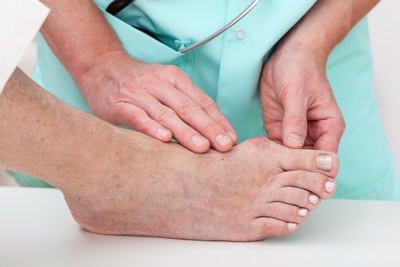Metatarsal Osteotomy and TMT Fusion
Surgery to treat bunions is often used for more severe cases, or after conservative methods have failed. There are several different surgical options available, depending on the cause and symptoms of a bunion.
Some of these procedures will require the use of metal screws, wires or plates to hold the joint structures together, especially after pieces have been removed. Your doctor will help you decide which procedure will be most effective for your individual condition after evaluating your medical history and X-ray images.
Most bunion procedures are performed on an outpatient basis under local anesthesia.General anesthesia may be used in certain situations depending on the complexity of the procedure and the preference of the patient. Complications from these procedures are rare but may include infection, recurring bunion or nerve damage.
Recovery from bunion surgery depends on the complexity of the procedure. Some people will be able to walk on their foot immediately after surgery, while others may need to use crutches or a cane and may not be able to walk for a few weeks or longer. It is important to keep your dressing clean and dry to ensure proper healing. Most patients require the use of orthotics after surgery in order to maintain stable and correctly-positioned feet.
I commonly perform two bunion procedures depending on the stability of the first ray. If it is determined by your physical exam and x-ray that your first ray is stable, then you are a candidate for first metatarsal osteotomy plus a distal soft tissue procedure. I routinely utilize the scarf procedure because it allows early postoperative weightbearing and good correction of the bunion procedure. The scarf procedure is performed as a Z-cut of the first metatarsal bone. I cut and realign the bone and hold it with two or three screws. You are able to get up and walk on the side of your foot with crutches immediately in the postop period and usually you are able to return to a sneaker by four weeks’ time. The scarf procedure is combined with a distal soft tissue procedure which includes shaving a small portion of the bump and realigning the tendons and ligaments around your big toe joint to straighten them.
For more severe bunions or those with an unstable first ray, I perform a first tarsometatarsal fusion. This still involves the soft tissue procedure where I shave the bump, realign the soft tissue but instead of cutting through the bone to the base of the metatarsal I fuse the first metatarsal to the medial cuneiform bone (a TMT or Lapidus procedure). This provides more long lasting correction in those patients who have an unstable first ray and also allows to restore the weightbearing for the first metatarsal in those patients who have significant second and third metatarsalgia (pain in the ball in the foot). Because it involves a fusion, the recovery is longer and you cannot walk on it fully for six weeks’ time. You are in a splint or a postop boot and on crutches for the first six weeks following this procedure. While it is a longer procedure than an osteotomy, the chance of recurrence after first TMT fusion is lower than after a first metatarsal osteotomy.
Which bunion procedure is right for you depends on your age, activity level, overall general health, as well as your physical exam and x-rays. We try to match the bunion procedure to the patient and not perform the same procedure on all the patients. The overall majority of bunion patients are happy with the results of their surgery and we have published extensively on our results following bunion surgery.


